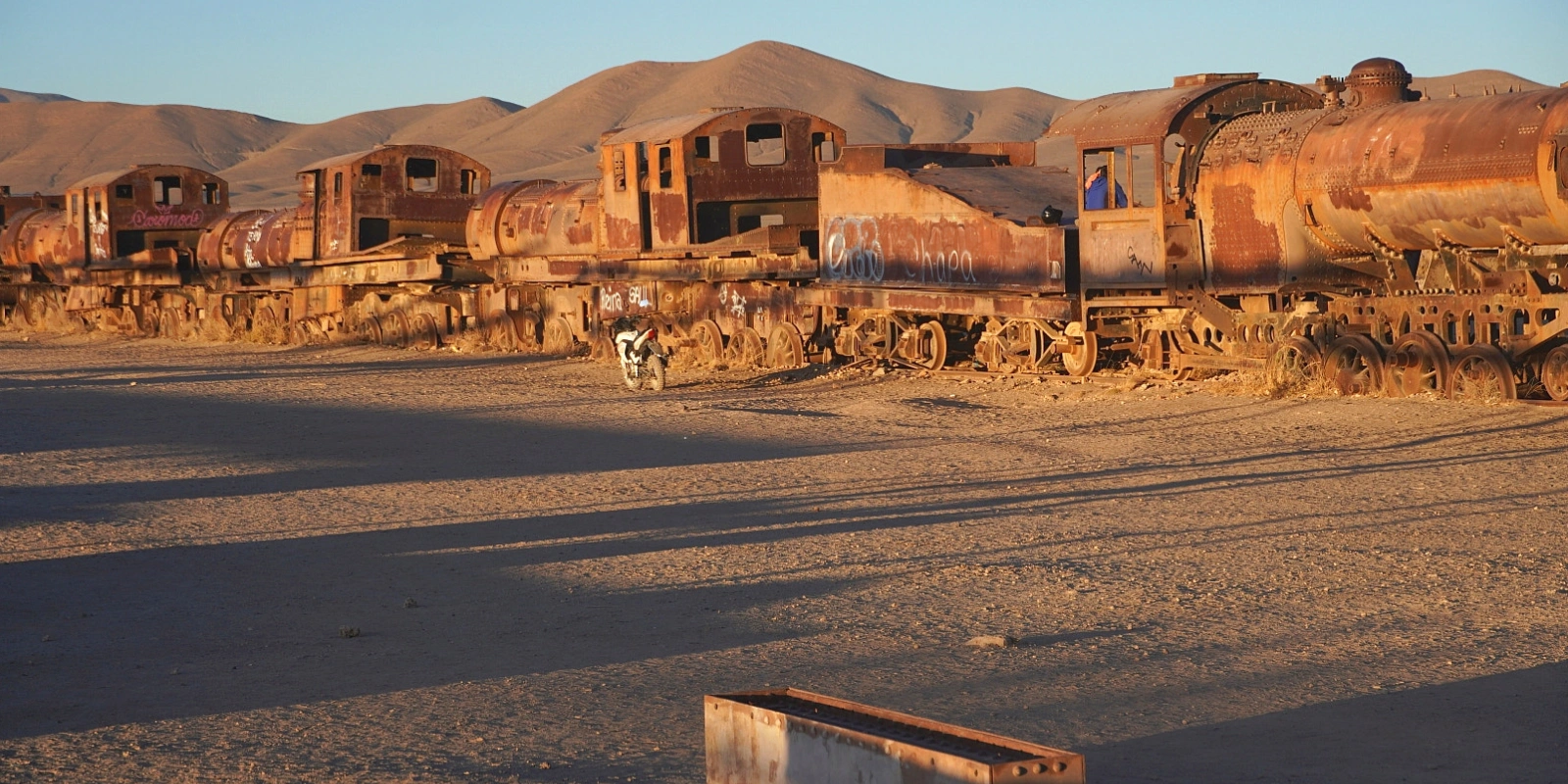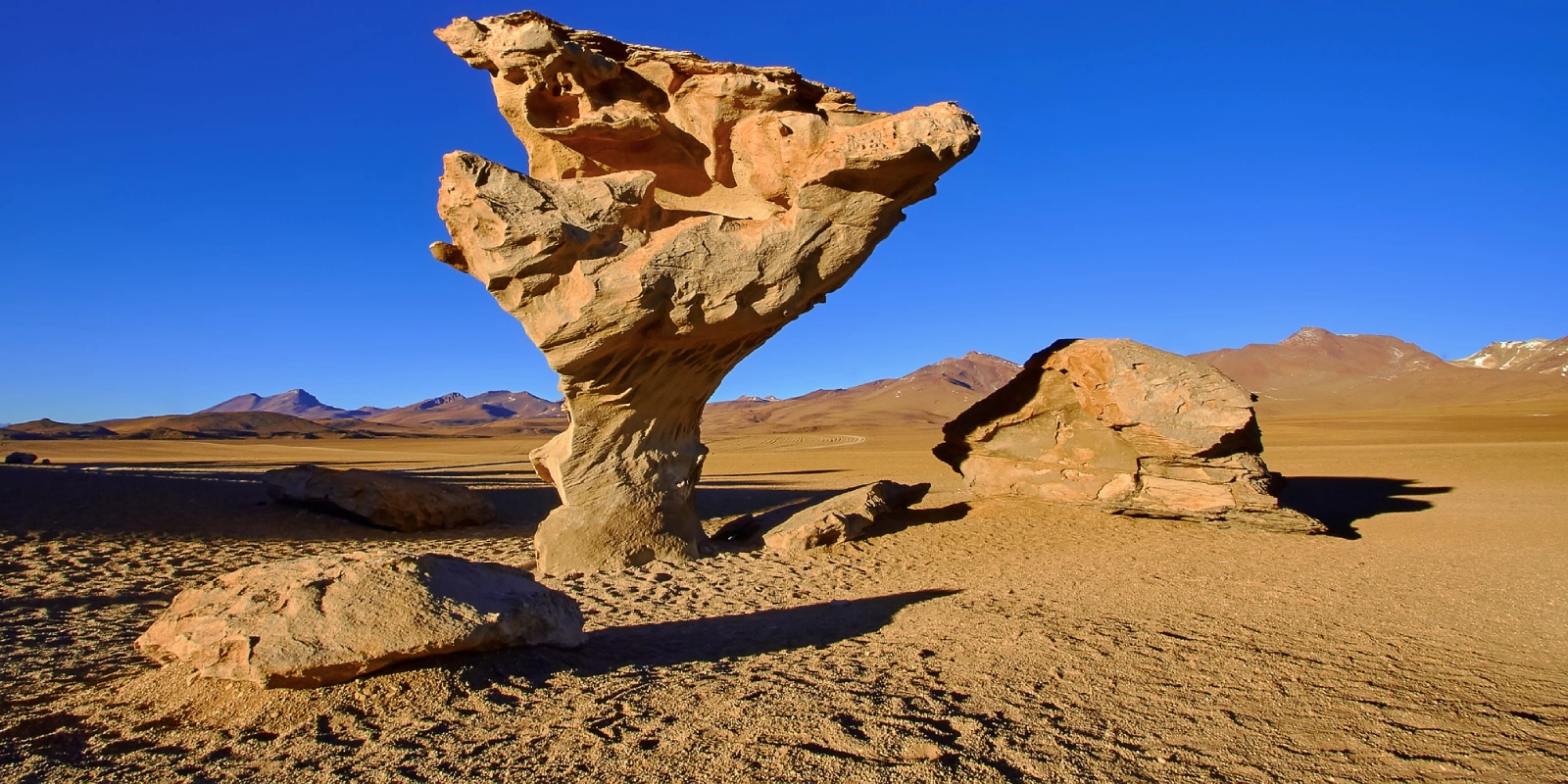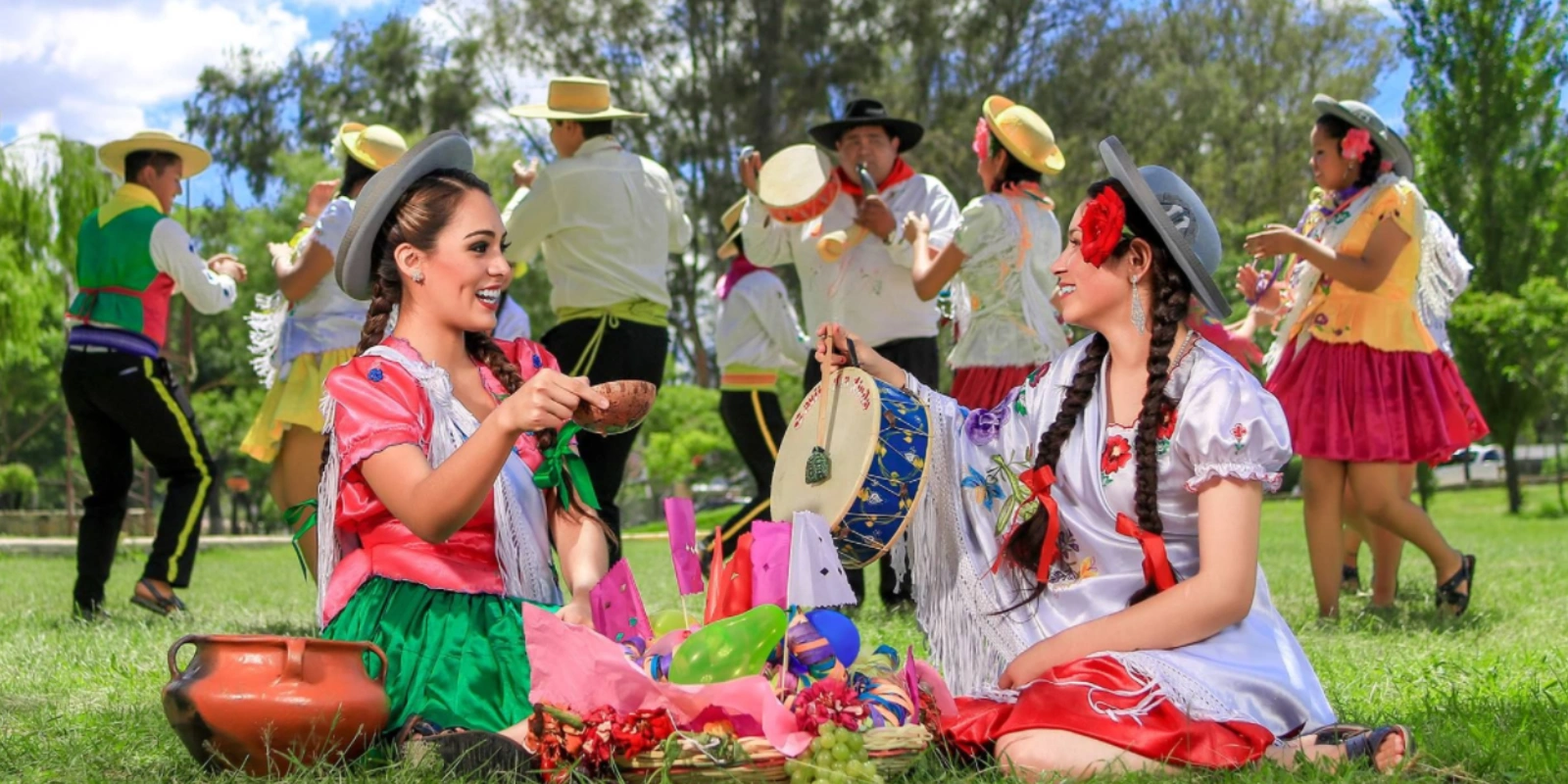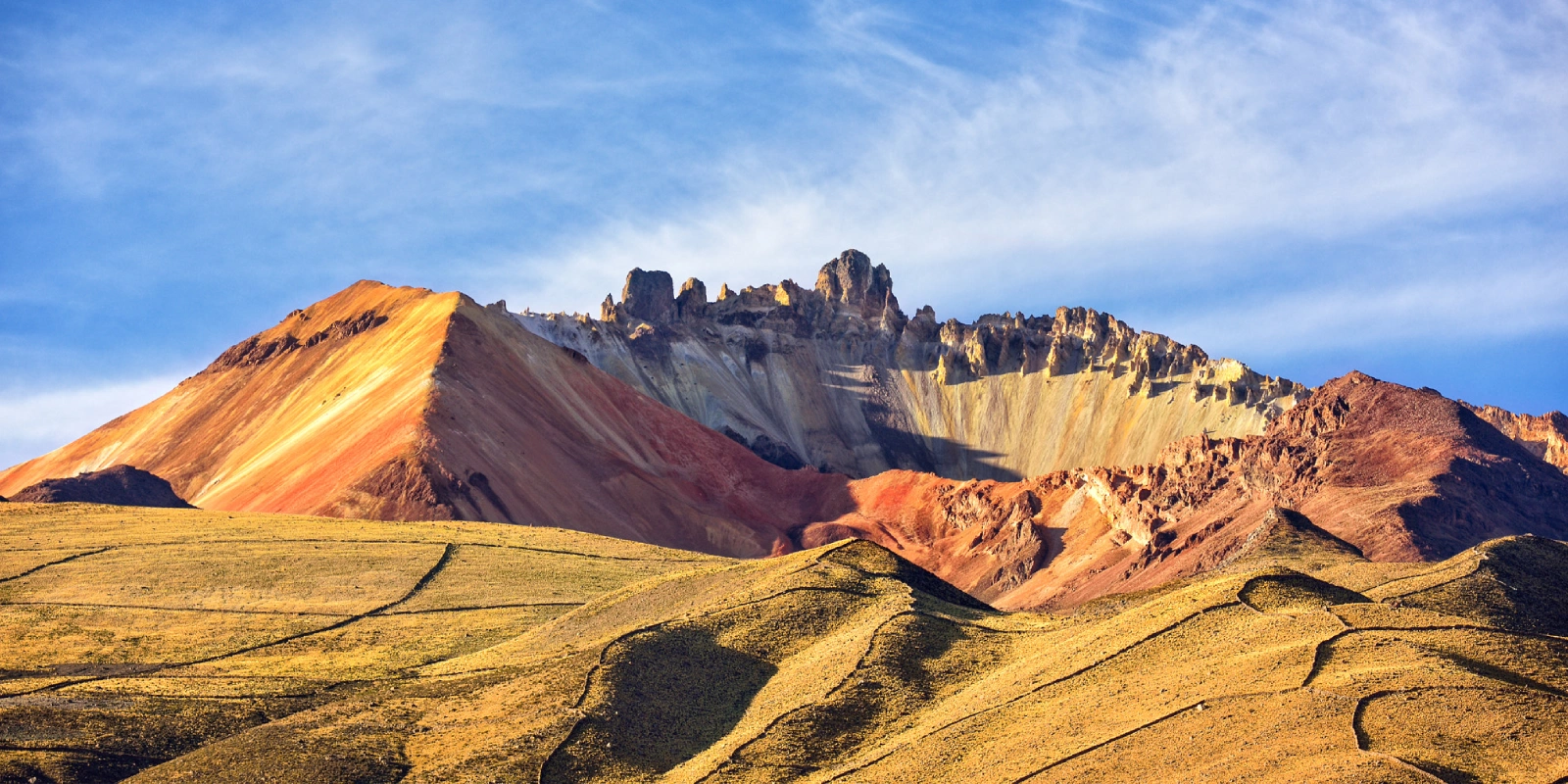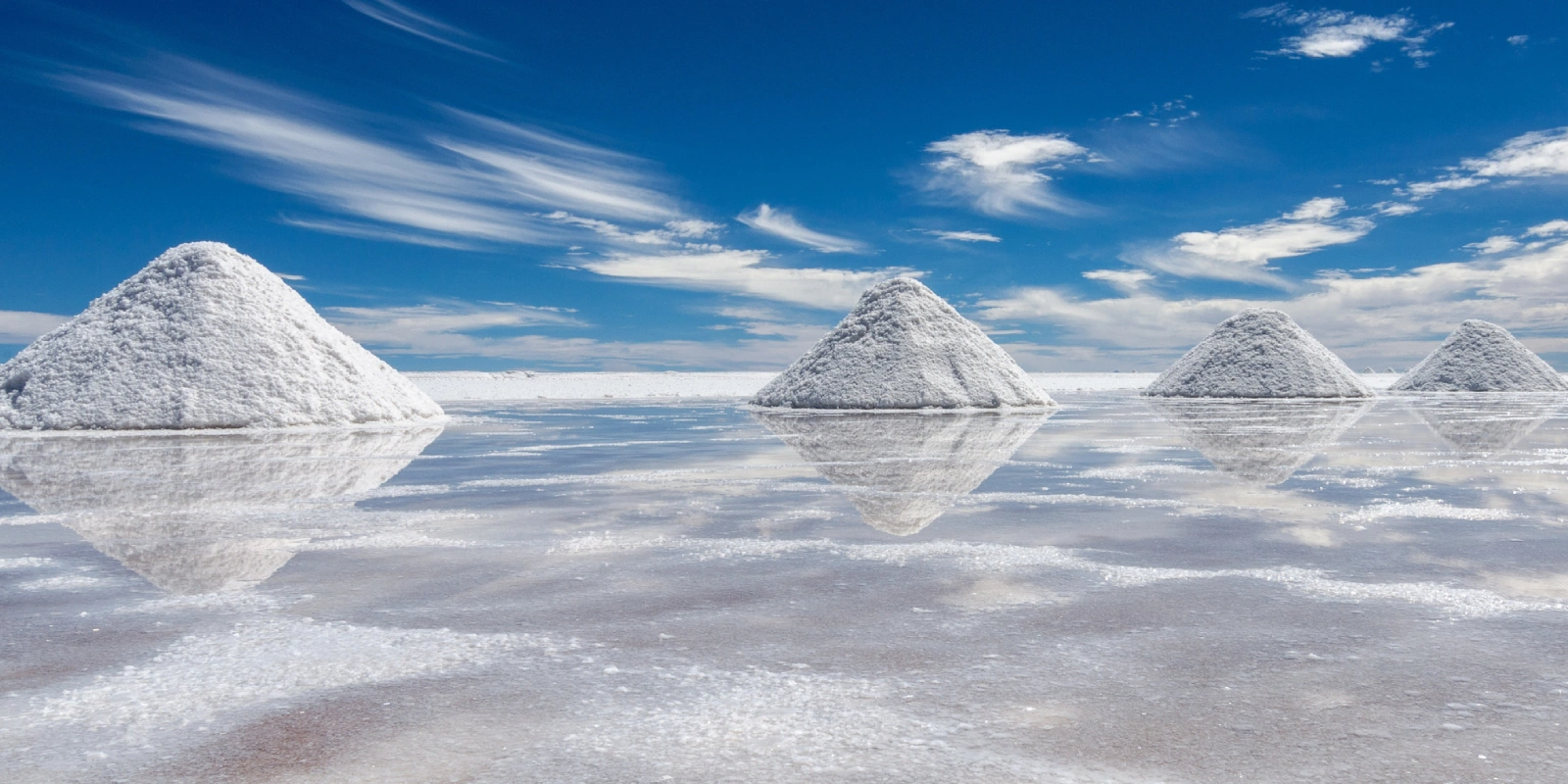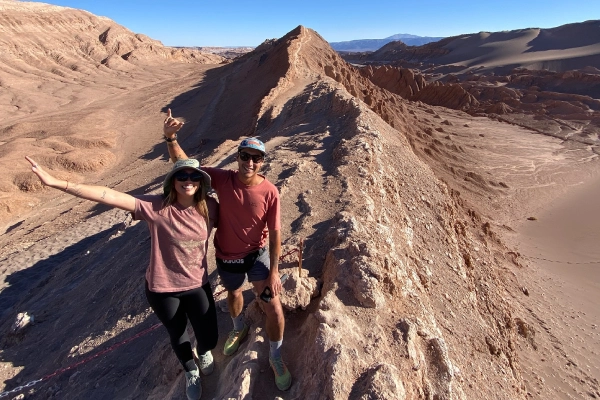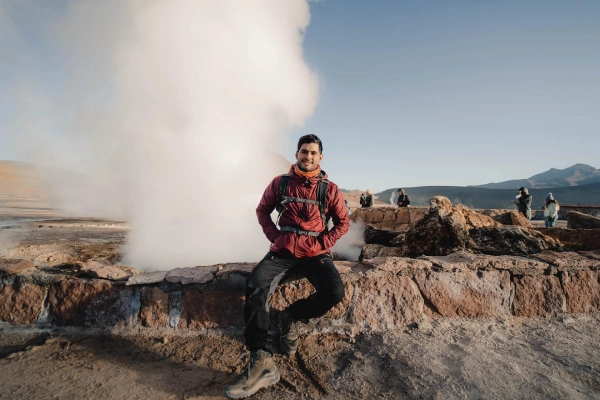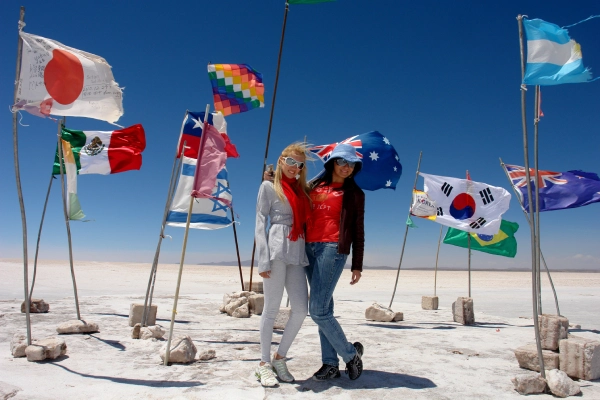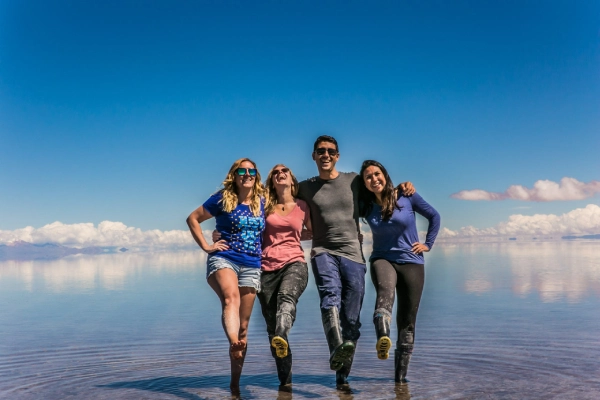Bolivia is a country with a lot of tourist diversity, due to its cultural diversity, its geographical regions and diverse gastronomy, that you will see by your own eyes.
The Copacabana small town, was one of the first tourist destinations in Bolivia. It is a city that borders Peru and is widely visited by many people from around the world to navigate the Highest Lake in the World, as well as some existing islands in its interior, among which we can highlight the Island of the Sun, which is the largest in the world.
Lake Titicaca and that is located on the Bolivian side and that is related to the Sun God Cults, because the Legend tells that their Inti – The Sun God created his son Manco Cápac and his daughter Mama Ocllo, the first Incas, who founded the City from Cusco.
Sucre is one of the best preserved Colonial Cities in Latin America.
Itinerary
Day 1: La Paz Reception – La Paz city. (A)
Reception and welcome at the airport by our representative of agency
At the right time, we begin our visit of approximately 3.30 minutes, through the La Paz city. Then, we go to visit touristic places such as: the Witches’ Market, the Plaza Murillo, where the cathedral, the Government Palace, the Congress are located. Then, we go through the famous Jaén street, where the municipal museums are located. Then we continue to the Killi – Killi viewpoint to have an amazing view of the city of La Paz.
Then, we go to south, pass through Miraflores, Obrajes, Calacoto, Florida, Aranjuez, and finally we arrive at the Valley of the Moon. This place has interesting and beautiful land formations made by the wind and water, we will take a walk around the surroundings and surely, then we will do an aerial tour to observe this wonderful city from the air.
At the end of our tour excursion tour, we left you at your Hotel.
Overnight in the City of La Paz.
Day 2: La Paz – Copacabana – Island of Sun. (A – C)
A representative of our Travel Agency will pick you up from the hotel. This tour excursion lasts approximately 3 hours and 30 minutes. During our tour, we will see, observe Cordilheira Real dos Andes and the vast altiplano. We will cross the Estreito de Tiquina to visit the Copacabana Peninsula. Arrived city of Copacabana. We are go to enjoy a typical lunch of the region.
After the breakfast, we go to the bay, there we take the boat to Isla del Sol. Then, we will pass through Escalinatas, then youth fountain, then we also observe the beautiful Agricultural Terraces. Once you have climbed the stairs, we will check on our accommodation that is located on the other side of the island. After the check-in, we will rest a little, then we go to see the sunset in the Isla del Sol. Dinner.
Overnight in the Isla del Sol.
Day 3: Isla del Sol – Copacabana – La Paz (D – A)
After breakfast, we go to your hotel for pick up, then we go to the port to take the boat back to Copacabana.
In Copacabana we go to visit the Copacabana church, where the miraculous Virgin of Copacabana is located, and if we are lucky we will be able to see the challa, known as the blessing of decorated cars that are parked outside the church.
Then you will have free time for go to through the markets and have lunch. In the afternoon, we will take the bus to return to the city of La Paz. Reception, transfer you, where you will board the bus to back to the city of La Paz. Reception, transfer you, where you will take the bus that will take you to the city of Uyuni.
Overnight on the bus heading to Uyuni.
Day 4: Uyuni – Train Cemetery – Incawasi Island – Villa Candelaria (A – C)
Arrival in Uyuni, our representative will be waiting to welcome you, then transfer you to a very good cafeteria.
At the right time, we begin our visit by the train cemetery, where the first locomotives that arrived in the 18th century in Bolivia for transfer of minerals between Pulacayo and Antofagasta. We continue our visit to the great Salar de Tunupa, our next stop is the town of Colchani, where the locals sell salt crafts and you see how they make demonstrations about the processing of salt.
Then we enter the same salt flat, which is the largest white lake in the world with approximately 10,500 km2. Our visit continues head to the salt eyes, the salt pyramids, formerly the Salt Hotel. We arrive at the Incawasi Island, which is a true oasis in the middle of the salt desert, there you can take a walk, through this unique island of Cactus, but before you make the registration and payment. Then we go to our first place to spend the night, which is in the town of Villa Candelaria.
Overnight at Villa Candelario Village.
Day 5: Ollague Volcano Viewpoint – Altiplanic Lagoons – Stone Tree – Lagoon
Colorado – Huayllajara (D – A – C)
After breakfast, we go to the Ollague Volcano Viewpoint, this is an Active Volcano that is located between the countries of Bolivia and Chile. We continue our journey and head to the altiplanic lagoons, where we will see, observe the first flamingos.
Then, we pass through the Kañapa, Hedionda, Honda Lagunas. Our journey goes through steps, we go through the Siloli desert, where the natural monument called: «Stone Tree» is located. After taking beautiful photographs, we continue to the Laguna Colorada viewpoint, after registering in the Avaroa National Park, we go to the viewpoint to observe the thousands of flamingos, that they nest in this beautiful lagoon. We go to Huayllajara.
Overnight in Huayllajara.
Day 6: Fumarolas – Hot springs – Green Lagoon- San Cristóbal – Uyuni (D – A)
This day we awake up earlier to see, observe the fumaroles that are active earlier, it is also the highest point of our trip 4900 meters above sea level. We go to the Polkes Hot Springs, if you want to take a refreshing and therapeutic bath here it is possible.
Then, we go to our southernmost point of our trip, the Green Lagoon, which is located in front of the Licancabur Volcano. Our return will be faster, we will take another route, we go to pass through rural towns such as San Cristóbal, a model mining town. Arrival in Uyuni.
Overnight in Uyuni.
Day 7: Bus Potosí – Reception – Bus Sucre (D – A)
In the morning we will let you in the bus stop, to board your bus to the Historic City of Potosi, a Representative from our Travel Agency, will wait for you to take you to the agency office so you can leave your bags there.
(Free time) We highly recommend visiting the Casa de la Moneda, which is a very historic place because it has beautiful treasures from the glorious past of Potosí and the country.
In the afternoon we will drive you back to the bus terminal to take your bus to the city of Sucre. Reception and arrival at your selected accommodation.
Overnight in Sucre
Day 8: Flight La Paz – Free afternoon (B)
In the morning at the right time, we will transfer you to the recently opened Sucre airport, Alkatari, to have your return flight to the city of La Paz.
Reception at El Alto airport and transfer to your hotel. In the afternoon, you will have free time to walk around this wonderful city, by your own.
Overnight in the City of La Paz.
Day 9: La Paz – Departure
In this last day in our country, we hope that you have enjoyed your stay, that you take to your home, a beautiful memories of Bolivia. Our representative will assist you with the Check-in.
Important: The hours of the tours excursions will be reconfirmed at the destination.
For the development of this program a minimum of 2 Pax is required.
Included
TOUR INCLUDES
- Group Transportation 4 × 4
- Guide / Specialized Driver.
- Entrance Tickets
- Meals mentioned in the Program.
THE TOUR DOES NOT INCLUDE
- National or international air tickets.
- Services not detailed in the program.
- Extra money.
- Tips and others.
CONTACT US
GENERAL CONDITIONS
- All rates for our Packages to Bolivia are expressed in US dollars (optional for currency exchange) and are programmed per person.
- The rates valid for Peruvians only include IGV
- All our rates are subject to availability and changes.
- Children under 02 years and 11 months are considered INF (babies), do not pay any service and do not have the right to food, bed or seat on the tours.
- DCC (child) is considered a child from 03 to 10 years and 11 months, has a special rate and shares a room with parents.
- Children over 11 years old considered adults.
- Minors must travel with an identity document.
- Rates do not apply to holidays, Easter, long weekends, national holidays, Christmas or New Years.
More Information
The city of La Paz, officially Nuestra Señora de La Paz, is the seat of government and administrative capital of Bolivia.
Places to Visit in LA PAZ BOLIVIA
- Huayna Potosí
- Chacaltaya.
- Valley of the Moon.
- Copacabana.
- Las Brujas Market.
- Killi-Kill Lookout.
- Madidi National Park.
- Murillo Square.
- The Basilica of San Francisco.
- Jaén Street.
- Sopocachi.
- The Prison of San Pedro.
- The cable car.
San Pedro de Atacama
The driest desert in the world jealously hides a small oasis called San Pedro de Atacama, approximately 100 kilometers from Calama.
San Pedro de Atacama, is a town of adobe and dirt streets and is a Chilean commune located in the province of El Loa, in the Antofagasta region. Its capital is the town of the same name that also gives its name to the San Pedro de Atacama river that borders it.
Tourist Attractions of San Pedro de Atacama
The area was the center of development of the Atacameño culture and later it was an advanced point for the Incas. The archaeological remains that were found from ancient cultures are in:
Padre Le Paige Archaeological Museum: The R. P. Gustavo Le Paige Archaeological Museum is located in the commune of San Pedro de Atacama, in the II Region of Antofagasta, Chile. This museum belongs to the Universidad Católica del Norte
Aldea de Tulor: the village of Tulor is one of the oldest archaeological centers in northern Chile, which has millenary constructions made of clay. The Tulor Village is at least 2,300 years old, a time when the San Pedro River naturally watered the land.
In the surroundings of San Pedro de Atacama you can see impressive landscapes and rock formations typical of volcanic activity and wind. One of the biggest attractions is:
Valle de la Luna: It is a depression surrounded by desert dunes and hills with impressive sharp ridges, located on the Cordillera de la Sal. It is part of the Los Flamencos National Reserve.
Tatio Geysers: El Tatio is a field of geysers located in the Andean mountains of northern Chile, in the Antofagasta Region, at about 4200 meters above sea level. It is the largest group of geysers in the southern hemisphere and the third largest in the world, after Yellowstone and Kronotski Nature Reserve, whose fumaroles create impressive plumes of steam that can be seen between 6 and 7 in the morning.
GASTRONOMY
Within San Pedro de Atacama, there is a great variety of places to taste, such as typical Atacameño food, stone pizzas or even different vegetarian options that use the most typical vegetables and legumes of the area.
HOW TO GET
Flight: Flight from Santiago – Calama (2 hours 10 minutes)
Bus: 20 hours from Santiago to Calama – Calama San Pedro (1 hour)
Salar de Uyuni
The Salar de Uyuni is the world’s largest salt desert, with an area of 10,582 km² (or 4,085 square miles) and an elevation of 3,650 meters above sea level. The Salar is also the world’s largest lithium reserve 50-70% of the world’s lithium, and it also has significant amounts of potassium, boron and magnesium
Where is the Salar de Uyuni located?
The Salar de Uyuni is the largest continuous and high salt desert in the world, with an area of 10 582 km². It is located at about 3,650 meters above sea level in the southwest of Bolivia, in the Daniel Campos province, in the department of Potosí, within the highland region of the Andes mountain range.
Climate in the Salar de Uyuni
The climate in the Salar de Uyuni is desert and there is virtually no rainfall during the year. The average annual temperature in Uyuni is 10.1 ° C. The approximate average rainfall is 124 mm. In winter there are the lowest temperatures and the region is usually cold, dry and very windy.
What is the meaning of Copacabana?
Copacabana is the name of a small town in Bolivia, located on the shore of Lake Titicaca, on a peninsula that joins the mainland already in the territory of Peru. The name of the place comes from the Quechua expression quta khawaña, which means “to look at or contemplate the lake.”
When is the festival of the Virgin of Copacabana in Bolivia?
Mrs. De Copacabana is the Patron Saint of Bolivia and her Fiesta is celebrated every August 5. Where most of the devotees visit the Virgin of Copacabana.
Did you know that the cult of the Virgin of Copacabana began in 1583 in the viceregal era, in the town of Copacabana at more than 3,800 meters above sea level, and 139 km from the city of La Paz, and lying on a hill , where the Copacabana peninsula enters Lake Titicaca, a place that corresponds to Bolivia.
When was the Sanctuary of the Virgin of Copacabana built?
The Basilica has an imposing beauty and a great collection of religious objects. The temple was built in the Renaissance style between 1601 and 1619, by the architect Francisco Jiménez de Siguenza, and completed together with the atrium and surrounding areas in 1640.
Why is it called Isla del Sol?
Why is it called Isla del Sol?
The island in Inca times was a sanctuary with a temple with priests dedicated to the Sun god or Inti and hence its name.
Where is the Isla del Sol located?
Isla del Sol is located in the center of Lake Titicaca, considered one of the highest formations in the world at 3,814 meters above sea level. and with an approximate area of 9.6 kilometers long by 6.4 kilometers wide, which represents 77 km2, being one of the largest in the Sacred Lake on the surface.
What does the Isla del Sol represent in history?
Legend has it that it was on the Island of the Sun in Bolivia where the two creators of the Inca culture were born, Manco Cápac and Mama Ocllo, who have their origin in the god Inti (the sun) according to mythology.
Why did the Incas settle on Lake Titicaca?
According to data, it indicates that the Sun god sent his sons Manco Cápac and Mama Ocllo -who emerged from the depths of the lake- to civilize and educate the men of Earth with the purpose of founding an empire to honor the god Inti.
Ollague Volcano Viewpoint
Location The Ollagüe volcano, located on the border between Chile and Bolivia, with an altitude of 5870 meters, is one of the most active volcanoes in the Western Cordillera. A large fumarole about 100 meters high can be seen from the Ollagüe volcano viewpoint.
The most incredible highland lagoons of Bolivia are found in the Andean highlands almost on the border with Chile and within the Eduardo Avaroa Andean Fauna National Reserve
What are the Altiplanic lagoons?
The altiplanic lagoons (Miscanti and Miñiques) are found in the Andean highlands in the middle of volcanoes and mountains. The lagoons are part of the Los Flamencos National Reserve and their landscapes mix the color of the water, the volcanoes and the ice product of the low temperatures.
Stone Tree
The Piedra tree is a rocky seta-type geomorphological formation due to wind erosion that stands out from a set of volcanic rocks of different shapes located in a sandy area, Siloli desert, at the entrance to the Eduardo Avaroa Andean Fauna National Reserve.
Where is the Siloli desert located?
View of the Siloli desert, one of its most famous rock formations is the Stone Tree.
Price
HOW MUCH?
We have price alternatives that accommodate all budgets, prices per person, expressed in US Dollars.
Make your quotes and reservations by email [email protected], you can also communicate with one of our sales executives at the telephones detailed below, we will be happy to assist you.
Phone – WhatsApp: +51 969 787 221
Phone – WhatsApp: +51 986 994 218
HOW TO BOOK THE TOUR?
To start the reservation process, please send us the following information:
- Name and surname:
- Passport number:
- Nationality:
- Date of Birth:
- Phone:
- Very important – We need the address and information about the hotel that you are staying at, in the city of La Paz, to be able to pick you up at the time when the tour starts.
To confirm reservations it is required to pay 50% in advance and the other 50% can be paid upon arrival at your destination.
PAYMENT METHODS
- IZIPAY
- PAYPAL
- WESTER UNION
- MONEYGRAM
- TRANSFER TO OUR BANK ACCOUNT PERU

